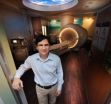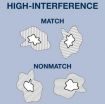(Press-News.org) The European Drug Initiative on Channels and Transporters (EDICT), which comes to an end this year, focused on membrane proteins. They make up a third of all proteins in every organism and play a key role in many human diseases.
Membrane proteins are difficult to study and poorly understood, but the four-year EDICT project has enabled a major step forward in our understanding of the structures – and even more importantly the functions – of over 30 of these proteins. Bringing together over 100 researchers across 12 countries, the project has developed better and faster ways to express proteins and determine their structure, to speed up the process of drug design.
Project co-ordinator Professor Peter Henderson from the University's Faculty of Biological Sciences explains: "Membrane protein research is still comparatively in its infancy with relatively few structures known, especially for proteins linked to serious disorders. EDICT has increased our knowledge on a scale and at a speed unparalleled in Europe and the data generated by the project will be an invaluable resource for the future."
EDICT created a critical mass of the leading membrane protein researchers in Europe and the advances they have made are considerable. The project has identified at least six potential new drug compounds and the majority of these are already under commercial development by a number of the project partners.
Two spin-out companies have been created from the project, to exploit the technological advances made through the research. Twenty-nine structures of the proteins have been completed with more underway and these data – together with other information on further proteins – are now held in an accessible database to support future research. Over 160 scientific and technical papers have been published or are in press, with a current issue of Molecular Membrane Biology dedicated to papers based on the project.
Professor Henderson says: "The project was organised to maximise interaction between the 40 research groups involved and ensure immediate access to the data generated. The results we've obtained are impressive. EDICT proves that European funding for scientific research can help to make a substantial and significant contribution to the advancement of health in Europe."
### END
UK-led project unravels the structures of membrane proteins
2012-10-01
ELSE PRESS RELEASES FROM THIS DATE:
'Green Brain' project to create an autonomous flying robot with a honey bee brain
2012-10-01
Scientists at the Universities of Sheffield and Sussex are embarking on an ambitious project to produce the first accurate computer models of a honey bee brain in a bid to advance our understanding of Artificial Intelligence (AI), and how animals think.
The team will build models of the systems in the brain that govern a honey bee's vision and sense of smell. Using this information, the researchers aim to create the first flying robot able to sense and act as autonomously as a bee, rather than just carry out a pre-programmed set of instructions.
If successful, this ...
Yearlong MAGIC climate study launches
2012-10-01
UPTON, NY - A Horizon Lines container ship outfitted with meteorological and atmospheric instruments installed by U.S. Department of Energy (DOE) scientists from Argonne National Laboratory and Brookhaven National Laboratory will begin taking data today for a yearlong mission aimed at improving the representation of clouds in climate models. The study, a collaborative effort between DOE's Atmospheric Radiation Measurement (ARM) program Climate Research Facility and Horizon Lines, marks the first official marine deployment of the second ARM Mobile Facility, AMF2, and is ...
Nothing to sneeze at: Scientists find cheating ragweed behaves better with its kin
2012-10-01
Cheating. Conflict. Competition. It may sound like a soap opera but this is the complex life of the despised ragweed plant.
And in the highly competitive fight for nutrients, researchers have found ragweed will behave altruistically with its siblings, investing precious resources for the benefit of the group.
A growing body of work suggests plants recognize and respond to the presence and identity of their neighbours and the findings, published online in the journal PLOS ONE, provide further evidence of the importance of family in preserving cooperation within and ...
Evidence-based guidelines enable optimal treatment of common low-back pain
2012-10-01
AUGUSTA, Ga. – While scientific evidence suggests that less is typically more when it comes to diagnosing and treating low-back pain in the U.S., the number of expensive imaging exams and surgeries done on patients continues to rise, researchers say.
More than 25 percent of American adults report at least one episode of acute low-back pain in the past three months and the annual total price tag is about $100 billion, according to a study in an issue of the Journal of the American College of Radiology focusing on health care reform.
"For the great majority of patients, ...
Longest fiber-optic sensor network developed
2012-10-01
This press release is available in Spanish.Montserrat Fernández-Vallejo, a telecommunications engineer and graduate of the UPNA-Public University of Navarre, has experimentally developed various fibre-optic sensor networks for the remote monitoring of large infrastructures. Specifically, she has managed to develop the largest network so far in existence —measuring 250 km—, which is equipped with a multiplexing capability, (which enables two or more information channels to be combined within a single transmission medium).
This technological development in the field of ...
EARTH: Risky business: Modeling catastrophes
2012-10-01
Alexandria, VA – The probability that a given natural hazard could become a natural disaster is higher today than at any previous point in history, largely because of population growth putting more people and infrastructure in harm's way. Who pays for the damage and how is value and risk assessed? Much of it comes down to insurance and reinsurance agencies, which are relying more and more on sophisticated catastrophe modeling tools to help gauge when the next disaster will strike, and how much it will cost.
Catastrophe modeling has only been around for a couple of decades, ...
Baby communication gives clues to autism
2012-10-01
CORAL GABLES, FL -- Approximately 19 percent of children with a sibling diagnosed with Autism Spectrum Disorder (ASD) will develop Autism due to shared genetic and environmental vulnerabilities, according to previous studies. For that reason, University of Miami (UM) psychologists are developing ways to predict the occurrence of ASD in high-risk children, early in life, in hopes that early intervention will lead to better outcomes in the future. Their findings are published in the journal Infancy.
The study is one of the first to show that measures of non-verbal communication ...
Eliminating visual clutter helps people with mild cognitive impairment
2012-10-01
A new study from Georgia Tech and the University of Toronto suggests that memory impairments for people diagnosed with early stage Alzheimer's disease may be due, in part, to problems in determining the differences between similar objects. The findings also support growing research indicating that a part of the brain once believed to support memory exclusively – the medial temporal lobe - also plays a role in object perception. The results are published in the October edition of Hippocampus.
Mild cognitive impairment (MCI) is a disorder commonly thought to be a precursor ...
Researchers halt autoimmune disease myasthenia gravis in mice
2012-10-01
Working with mice, Johns Hopkins researchers say they have developed a gene-based therapy to stop the rodent equivalent of the autoimmune disease myasthenia gravis by specifically targeting the destructive immune response the disorder triggers in the body.
The technique, the result of more than 10 years of work, holds promise for a highly specific therapy for the progressively debilitating muscle-weakening human disorder, one that avoids the need for long-term, systemic immunosuppressant drugs that control the disease but may create unwanted side effects.
The research, ...
Advance directives: Implementation leaves much to be desired
2012-10-01
Advance directives are not widespread among the elderly. This was revealed by a cross-sectional study of 11 German nursing homes performed by Sarah Sommer and her colleagues and presented in the latest issue of Deutsches Ärzteblatt International (Dtsch Arztebl Int 2012; 109(37): 577). In the year 2007, only 11% of the nursing home residents had a personally signed advance directive, while a further 1.4% had a proxy directive, i.e., a document signed not by the resident but by a representative.
Few of the advance directives made any provision for an acute health crisis. ...


